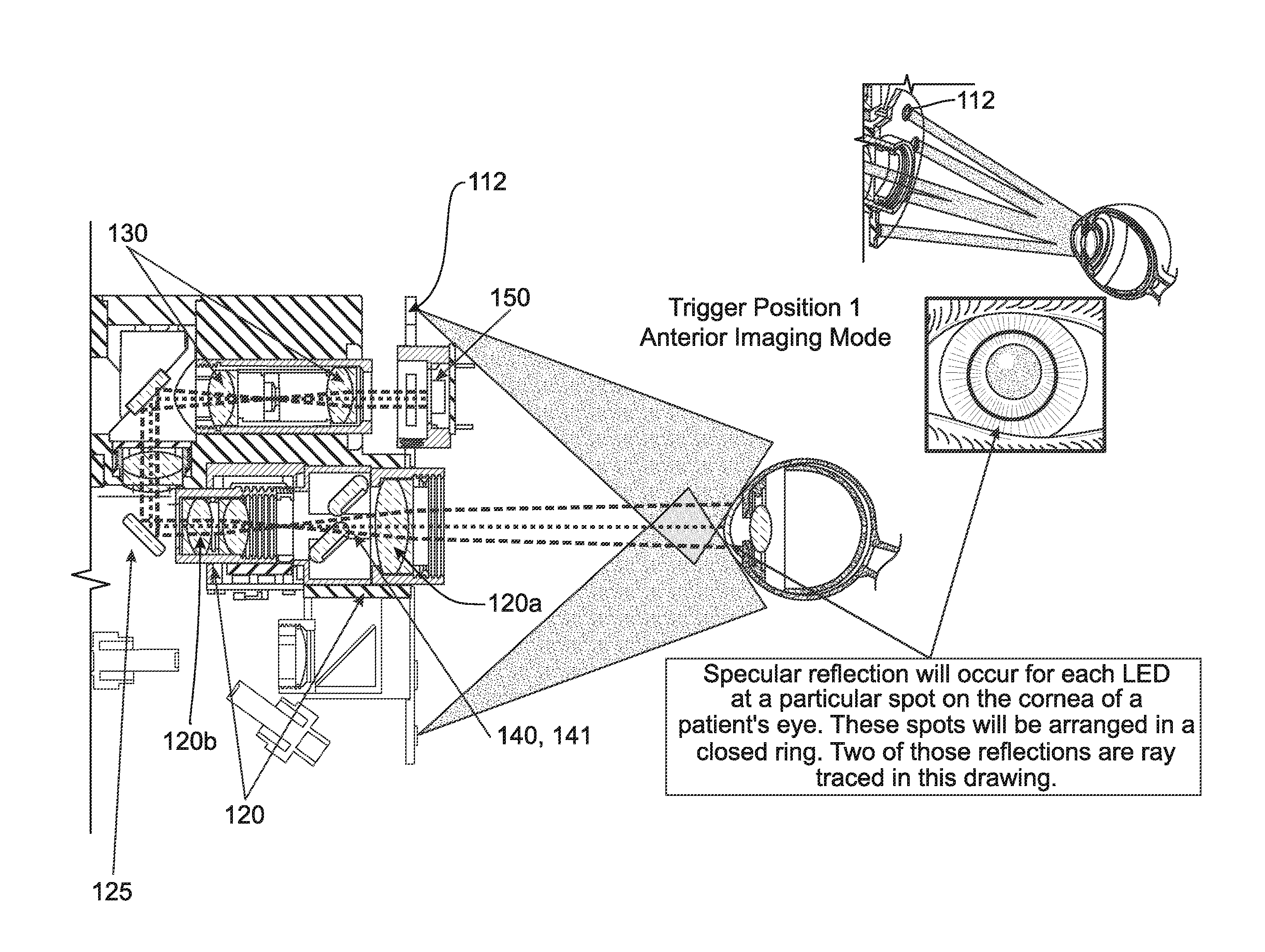Handheld reflectometer for measuring macular pigment
a reflectometer and hand-held technology, applied in the field of hand-held macular pigment reflectometers, can solve the problems of affecting eye sight and vision, affecting the reading ability of macular degeneration patients, and unable to read, recognize faces, drive safely on unfamiliar surfaces, etc., to achieve short intervals of time, reduce relative instrument-to-eye motion, and shorten the effect of tim
- Summary
- Abstract
- Description
- Claims
- Application Information
AI Technical Summary
Benefits of technology
Problems solved by technology
Method used
Image
Examples
Embodiment Construction
[0066]FIG. 1 illustrates a handheld macular pigment reflectometry (MPR) instrument 1 adapted for clinical use. The handheld MPR instrument 1 includes a housing 2 having a lower portion 3 that is ergonomically shaped to be received by an operator's hand. The handheld MPR instrument 1 enables clinician alignment and operation through a simple trigger switch 5 on the lower portion 3 actuated by a three-step alignment process that corresponds to a first trigger switch position (FIG. 5a), a second trigger switch position (FIG. 6a), and a third trigger switch position (FIG. 7a), which are discussed below.
[0067]The handheld MPR instrument 1 includes a display 10 that enables the clinician to check alignment process and view zeaxanthin and lutein optical density readings as well as the status of any diagnostic functions of the handheld MPR instrument 1. The handheld MPR instrument 1 includes an eye cup or eye shield 15, which allows the clinician to use the device in an illuminated room. Th...
PUM
 Login to View More
Login to View More Abstract
Description
Claims
Application Information
 Login to View More
Login to View More - R&D
- Intellectual Property
- Life Sciences
- Materials
- Tech Scout
- Unparalleled Data Quality
- Higher Quality Content
- 60% Fewer Hallucinations
Browse by: Latest US Patents, China's latest patents, Technical Efficacy Thesaurus, Application Domain, Technology Topic, Popular Technical Reports.
© 2025 PatSnap. All rights reserved.Legal|Privacy policy|Modern Slavery Act Transparency Statement|Sitemap|About US| Contact US: help@patsnap.com



